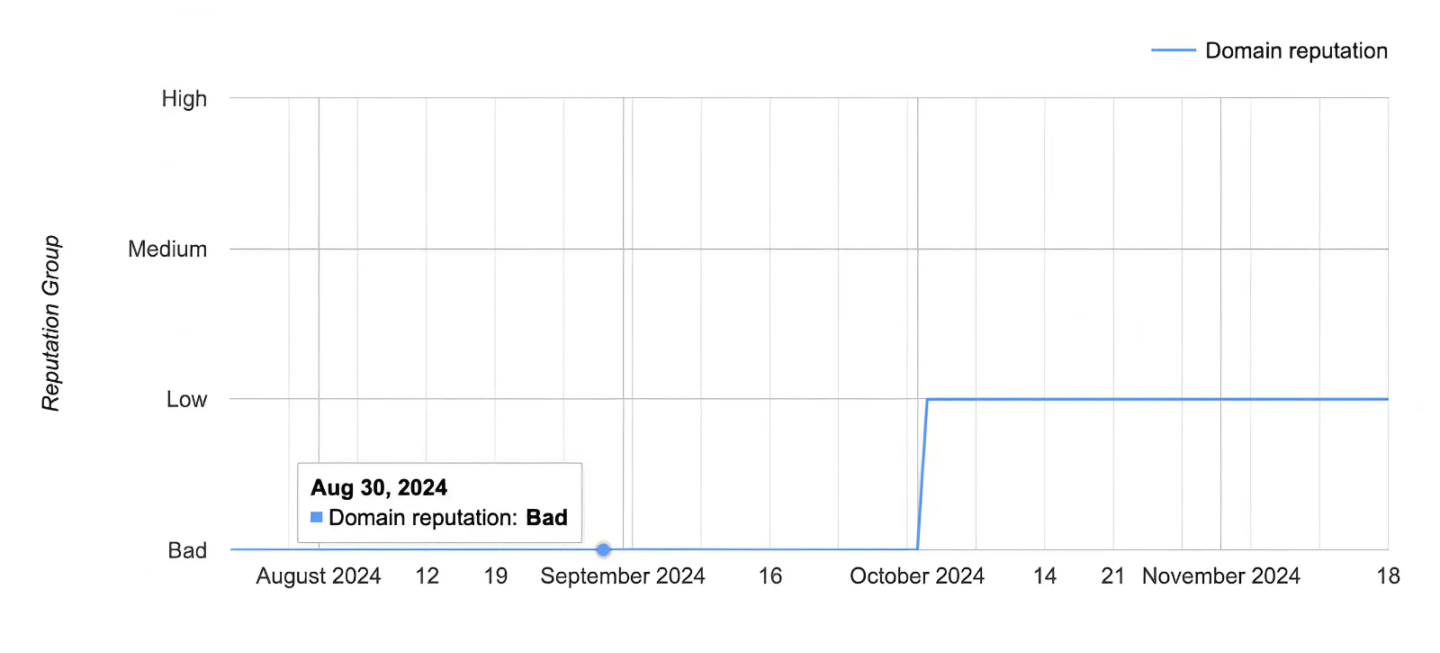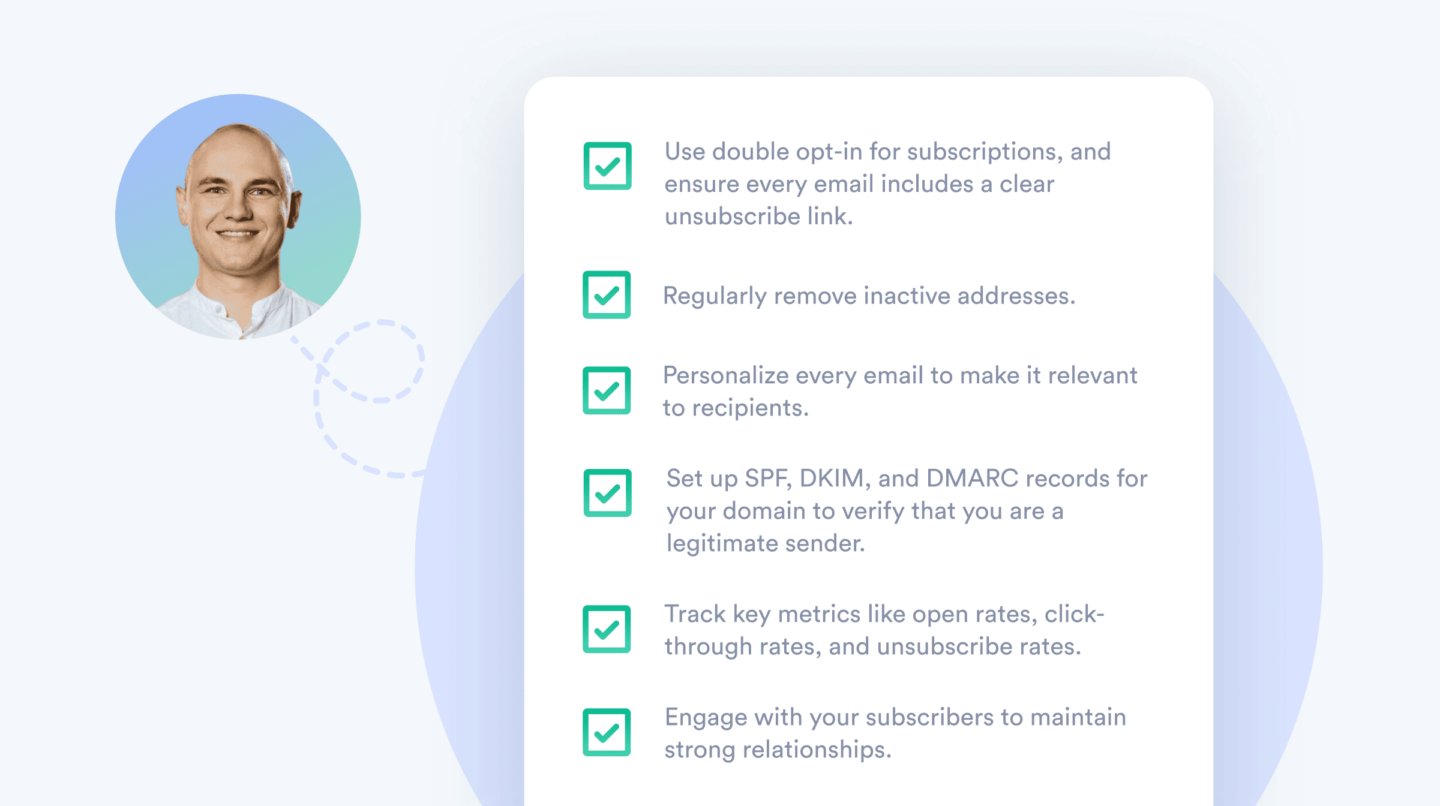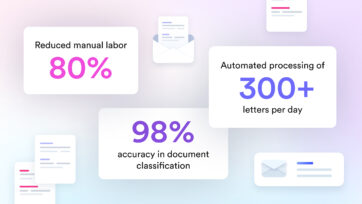- Portfolio
-
Services
Product DevelopmentFocus on the core idea and market fit while we masterfully handle user-focused product design.Learn moreEngineeringLeverage cutting-edge technology to address customer challenges with expert guidance.Learn moreAI consultingEmbrace the future of AI-driven innovation and thrive in a rapidly evolving digital landscape.Learn moreGrowth MarketingEngage targeted audiences and meet business goals through strategic marketing solutions.Learn more
- Company
- Insights
-
Areas of expertiseProduct DevelopmentFocus on the core idea and market fit while we masterfully handle user-focused product design.EngineeringLeverage cutting-edge technology to address customer challenges with expert guidance.AI consultingEmbrace the future of AI-driven innovation and thrive in a rapidly evolving digital landscape.Growth MarketingEngage targeted audiences and meet business goals through strategic marketing solutions.
How to Prevent Emails from Landing in Spam and Double the Open Rate
Author

Anton Vorobyev
Email Marketing Specialist
I’ve helped global brands restore email domain reputation, fix spam and spoofing problems, and craft multilingual campaigns targeting users in 100+ countries.
Main tools
- Business challenge
- Our solution
- Database cleanup
- Introducing subdomains
- User segmentation
- The results
- Email deliverability tips
The financial media publication relies heavily on email newsletters as a primary channel to engage and inform its subscribers. However, persistent email deliverability issues, including letters landing in spam folders, significantly impacted their audience engagement.
Addressing this challenge required a significant overhaul of their email marketing approach. Here’s how we implemented targeted solutions to increase email deliverability and drive higher subscriber engagement.
Key Points
- The average email open rate rose from 7.60% to 20%, showing the impact of cleaning up the database and segmenting users.
- A smaller, refined list of 23,600 subscribers achieved 5,000 opens, doubling the engagement from the previous 36,000 subscribers list, which had only 2,800 opens.
- The domain’s reputation improved from “bad” to “high” in three months, as validated by Google Postmaster.
Business Challenge
The client faced two significant challenges. First, their emails were landing in spam folders due to a low domain rating from Google Postmaster, which assesses how providers like Gmail view senders. Additionally, the presence of bots and inactive subscribers distorted engagement metrics, making it difficult to gauge true performance.
Second, the email open rate remained stagnant at 7-8%, despite the content being valuable. This indicated that the company was losing even interested users. To address email deliverability problems, the company needed a clear plan to rebuild trust with inbox providers and effectively re-engage their audience.
Our Solution
1. Database Cleanup
The first priority was to clean up the subscriber list. Using tools like Emailable, I identified and removed inactive users and bot accounts. Domains like “vtext.com” and “tmomail.net,” common spam triggers, were flagged and excluded from the list.

We also noticed that a significant proportion of users with bot-like behavior originate from one region (as identified by the ActiveCampaign platform). However, during registration, these users select other locations, which allows us to identify and remove them during this search.
2. Introducing Subdomains
Next, we revamped the company’s email infrastructure by introducing subdomains, such as news.example.com and events.example.com. These subdomains were used to segment email types, including daily newsletters, promotional emails, and customer support. As a result, each subdomain developed its own reputation, ensuring that issues in one stream wouldn’t affect the others.
To secure delivery, I implemented SPF, DKIM, and DMARC authentication. These protocols verify that emails come from a trusted source. This reduced the risk of phishing or spoofing attacks. We then gradually warmed up the subdomains.
We began by sending small batches of emails and gradually increased the volume. However, the chart shows spikes and this happened because adding more people to the Warming List caused fluctuations in email domain reputation. To address this, we focused on the most active recipients first.
We increased the list to 2531 subscribers who open 100% of the time. Then, we launched reactivation campaigns, which within a month brought in 3177 opens. Finally, within a week, we added the remaining subscribers.
This approach rebuilt trust with inbox providers and Google Postmaster, improving both email deliverability rate and open rates.
From August to November, we saw how this engagement strategy boosted the open rate from 7.60% to 21.59%.
3. User Segmentation
Not all users engage equally. That is why I segmented the audience based on behavior into active and inactive groups. Active users got personalized content, while inactive users were targeted with re-engagement campaigns.
- For users inactive for 1-2 years, we sent a sequence of three emails to reconfirm their interest.
- Users who have been inactive for over six months received offers and updates to spark renewed interest.
Those who did not respond were removed from the list. This ensured that the database remained efficient and up-to-date.
As a result, personalized reactivation campaigns successfully re-engaged 5-10% of inactive subscribers. Reviving dormant accounts played a crucial role in increasing overall engagement rates.
The Results
Domain reputation improvement


In just three months, the transformation was remarkable. One key moment was reviving the main domain.
Within this short period, the company’s domain reputation rose from ‘bad’ to ‘high,’ as confirmed by Google Postmaster. Initially, I thought the subdomains would drive most of the improvements.
But as the subdomains gained traction, the main domain’s reputation also soared. It reached a ‘high’ reputation for the first time in the client’s history. As a result, spam complaints dropped sharply, and emails started landing in inboxes.
Furthermore, open rates more than doubled, rising from 7-8% to 20%. Previously, it took 36,000 emails to get around 2,800 opens, but now just 23,600 emails achieved nearly 5,000 opens.
Along with better engagement, we reduced the email database from 150,000 to 18,000 active subscribers. This cut in list size saved substantial costs on platforms like ActiveCampaign, while also improving performance.
Few projects deliver such dramatic results in just 90 days. By following three key steps—cleaning the database, implementing subdomain strategies, and re-engaging subscribers—the client built a scalable system that’s ready for long-term success.
Looking Ahead
To keep this success going, we recommend running monthly reactivation campaigns and regularly identifying and removing inactive users. This will keep the database clean and prevent issues caused by inactive users.
Email deliverability tips
How you can avoid issues like these
This project proved that quality outweighs quantity in email marketing. By following this checklist, you can sidestep the mentioned pitfalls and improve email deliverability.

If you’re looking to refine your email strategy, we’re here to help you achieve better results. Let’s discuss how we can support your journey.


